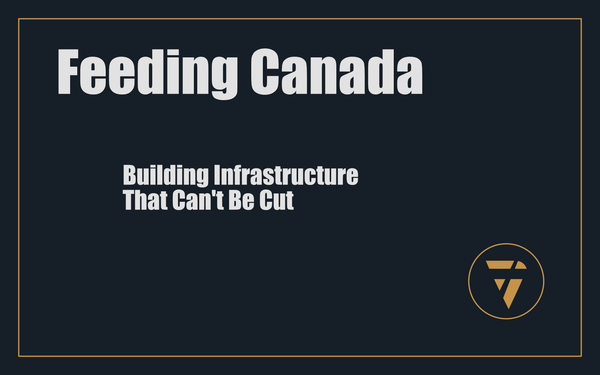US-China Breakdown
The Fragile Balance Shatters

The two most powerful nations on Earth no longer compete, they clash. The US-China Breakdown isn’t just a geopolitical fault line; it’s a seismic shift that threatens the global order.
The Cost of Fracture
For decades, the US and China maintained an uneasy equilibrium, a delicate dance of cooperation and rivalry. But the balance is gone. Trade tensions, technological competition, and ideological divides have metastasized into something more dangerous: systemic hostility.
The US-China breakdown, as outlined in Top Risks 2025, signals an unraveling that goes beyond diplomacy. This isn’t just about tariffs or military posturing; it’s about the global economy losing its two main anchors. What follows isn’t a new Cold War, it’s a fragmented world where everything, from supply chains to innovation, is at risk.
The Drivers of Breakdown
The disintegration of US-China relations didn’t happen overnight. It’s the culmination of several key factors:
- Economic Decoupling: Both nations are increasingly severing ties, with the US restricting access to key technologies like semiconductors and China doubling down on self-reliance through initiatives like "dual circulation." The result? A fragmented global market where inefficiency and duplication replace collaboration.
- Military Brinkmanship: In the South China Sea and Taiwan Strait, military maneuvers are escalating. The risk of miscalculation grows with every provocation, leaving the global economy hostage to geopolitics.
- Ideological Entrenchment: The ideological divide between authoritarian China and democratic America has hardened. Both nations now frame their policies as existential battles for their respective systems of governance. It’s clear that ideology globally is really just profit disguised as tribalism.
This isn’t just a geopolitical spat, it’s a systemic shift. And the rest of the world is caught in the crossfire.
The Global Fallout
The breakdown between the US and China ripples far beyond their borders.
- Economic Consequences:
The global economy relies on integrated supply chains that connect Chinese manufacturing with American consumption. Decoupling disrupts this foundation, driving up costs and creating inefficiencies. Emerging markets, reliant on trade with both nations, face impossible choices. - Technological Fragmentation:
Competing technological ecosystems are emerging. The US supposedly champions open systems, while China expands its "Digital Silk Road." This division slows innovation and forces companies to choose sides, stifling global progress. - Geopolitical Instability:
Allies are pressured to align with one power or the other, fracturing longstanding partnerships. The Asia-Pacific region becomes a powder keg, with countries like Taiwan and South Korea bearing the brunt of escalating tensions.
A World Without a Centre
The US-China breakdown marks the collapse of globalization as we know it. The interdependence that defined the 21st century is being replaced by fragmented blocs. For businesses, this means navigating a world of unpredictable trade barriers, regional alliances, and bifurcated standards.
But this isn’t just a risk, it’s an opportunity. In chaos, there’s room to reimagine supply chains, diversify markets, and build resilience. Companies that adapt quickly to this fractured landscape can find competitive advantages.
Canada can be the centre. The stability. If we choose it.
Navigating the Breakdown
- Diversify Supply Chains: Reduce dependence on any single market. Explore manufacturing hubs in Southeast Asia, Latin America, or Africa to build redundancy.
- Master Dual Systems: Understand and adapt to competing standards in technology, trade, and compliance. Flexibility will be a survival skill.
- Strengthen Regional Strategies: Invest in localized operations that can navigate regional complexities without relying on global integration.
- Monitor Geopolitical Trends: Stay ahead of policy shifts and trade agreements. Agility in response to new regulations or tariffs will mitigate risk.
- Champion Collaboration Where Possible: Even in a divided world, there are opportunities for bridge-building through public-private partnerships, sustainability initiatives, and neutral tech platforms.
A New Era of Fragmentation
The US-China breakdown is a reckoning. For businesses, governments, and individuals, the challenge isn’t just to survive this shift, but to thrive within it. The old rules no longer apply; it’s time to rewrite them.
How is your organization preparing for a divided global economy? Let’s explore strategies to build resilience, navigate fragmentation, and find opportunities in the fractures.
This Substack is reader-supported. To receive new posts and support my work, consider becoming a free or paid subscriber.
This is what I’m working on. Tell me what you think, I enjoy the conversation! Subscribe and follow the work in real time.
Thanks!
B
The US-China breakdown isn’t just rivalry, it’s systemic collapse. Global trade fragments, innovation slows, and alliances fracture. To thrive, diversify supply chains, master dual systems, and build resilience. Adapt now or risk being left behind.
PS -





